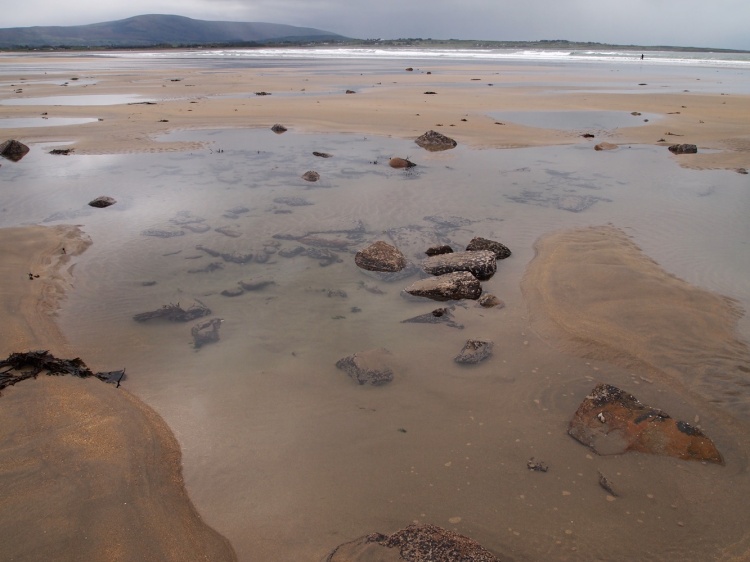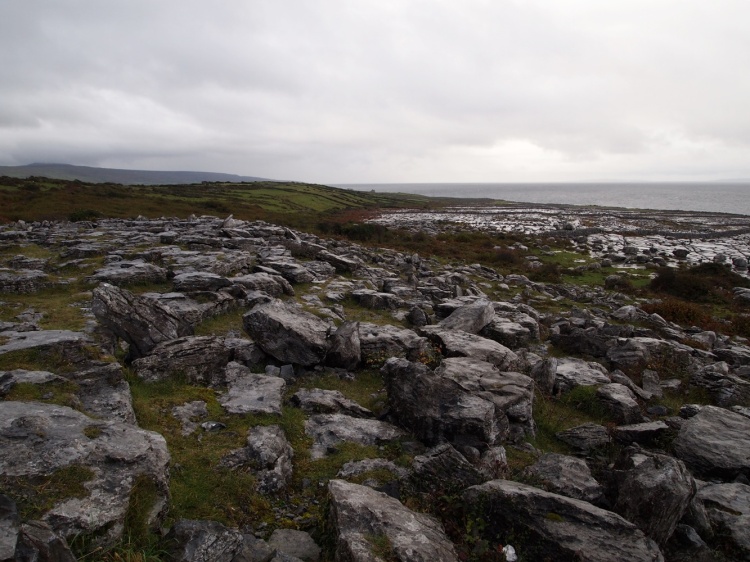The past few days had been so full of breathtaking beauty that I couldn’t imagine there being any left in the country to see. But, I learned that Ireland is a country full of surprises, and it’s wealth of beauty proved endless.

We woke in Derry where we’d spent the previous night and boarded the bus immediately after breakfast. First stop – the ancient pagan burial ground known as Creevykeel. Beginning as early as 3,000 BC, this site was used to dispose of bodies in ceremonial ways. Archaeologists have identified a central court, perhaps once used for ceremonies, and a passage grave, presumably thought of as a “door” to the other world.




Then, we headed to a very old yet still active church in County Sligo – Drumcliff Abbey. The abbey was founded in 525, but as we walked in, a man was setting up a projector for an event later that day.
The abbey is also home to the final resting place of W.B. Yeats. His grave is located in the adjacent cemetery associated with the nearby church of St. Columbia. The famous poet actually died in France, but his body was brought back to County Sligo so he would be near his family and the land he loved.



Then we headed to the coastal town of Strandhill, still in County Sligo, to grab a bite to eat. County Sligo is known for its world-class surfing beaches, Strandhill being one of them. So, to see what all the fuss was about, Camilla and I decided to take our sandwiches to the beach.
It was pretty chilly, but seeing the long stretches of sand and grey water was so worth it. There was an abundance of beach-life along the water line, too, since it was so far from tourist season. We saw so many snails, seaweed, and birds just enjoying their environment, while a few surfers braved the cold waves.Can’t say it was surfing season, but, to each his own I guess.






That night, we stayed in what I’ve decided was my favorite town in the country – Galway. It’s known as the cultural hub of Ireland, a place of music, dance and endless folklore. The town itself was adorable – the perfect little seaside village, and the culture was fun as well. We had the chance to experience live traditional music on the streets, in our dinner, and in an Irish pub later. Definitely a must-see for anyone visiting the country.
As we made our way south, we paused to check out the unique landscape in “the Burren.” The Burren is a sprawling national park, characterized by exposed limestone and many unique plants and animals. Our guide told us that it’s the only place on earth where flowers from the Alps, Arctic, and Mediterranean grow together. (It was easy to understand how the Alpine/Arctic flowers can grow there. Note to self: Ireland can be chilly!) We also saw some wild horses running around and grazing. Minus the bone-chilling sea breeze, it was like a scene from a fairy tale.




Next stop was the Baby Cliffs – the stretch of coastline resembling the Cliffs of Moher, just north of their more famous larger counterparts. We were still in the Burren, so we were surrounded by that characteristic limestone on all sides.



It started to rain, but thankfully that would be the only rain we’d get that day. It lasted just as long as our bus ride to lunch, where I enjoyed the best cup of seafood chowder I think I’ve ever had. And that’s coming from someone who grew up in New England!
Then, it was on to one of the main attractions: the Cliffs of Moher. With over five miles of jaw-droppingly beautiful cliffs, it’s no wonder that over a million visitors a year make the trek out here. In some places, the cliffs are over 700 feet high, with nothing but a bit of grass (and a very long fall) separating the visitor from the crashing waves of the grey Atlantic below. It’s a place so magical it’s inspired countless stories, songs and poems, and so popular that it’s been featured in films as notable as The Princess Bride and Harry Potter and the Half Blood Prince. It’s the icon of Ireland, the edge of the world.
It’s hard to describe exactly how it felt to be there. I’ve dreamed of being at the Cliffs of Moher for ages. And finally, there they were.











Then, we headed for Killarney, where we’d spend the night. Killarney, much like Galway, was a cute little town with lots of shops and restaurants for us to choose from. We’d see more of Killarney the next day, so for the night we were happy to explore the downtown area. Little did we know what natural beauty we’d see in the daylight!
Final Gelato Count: 55

